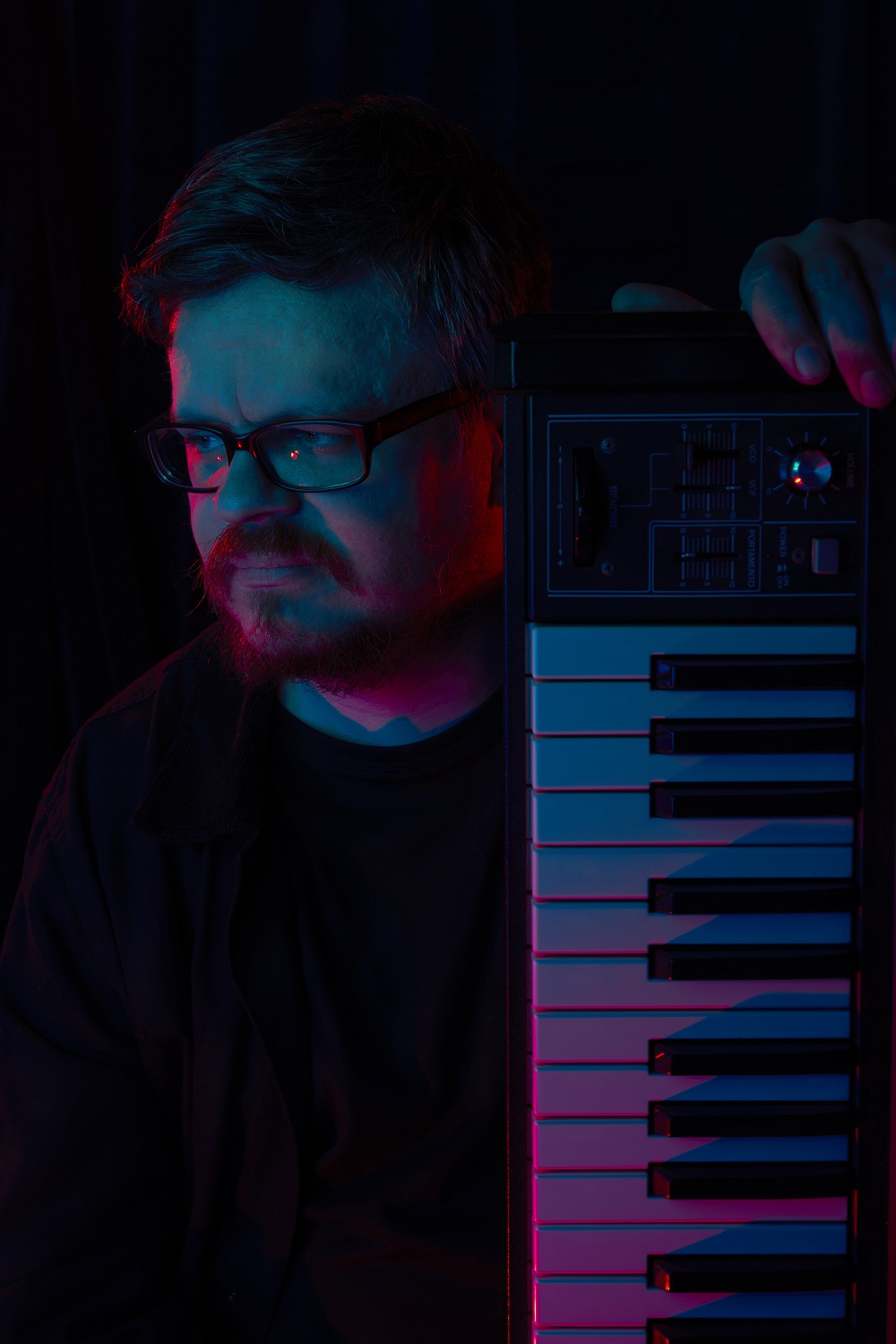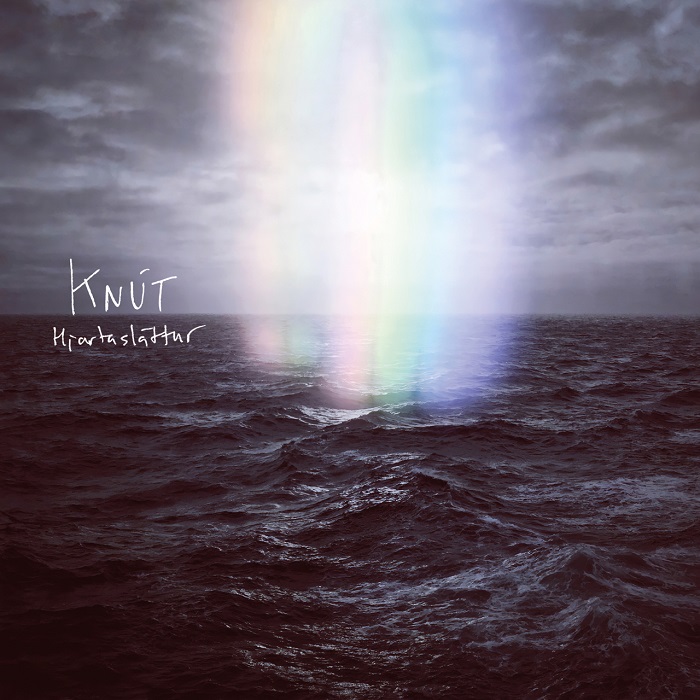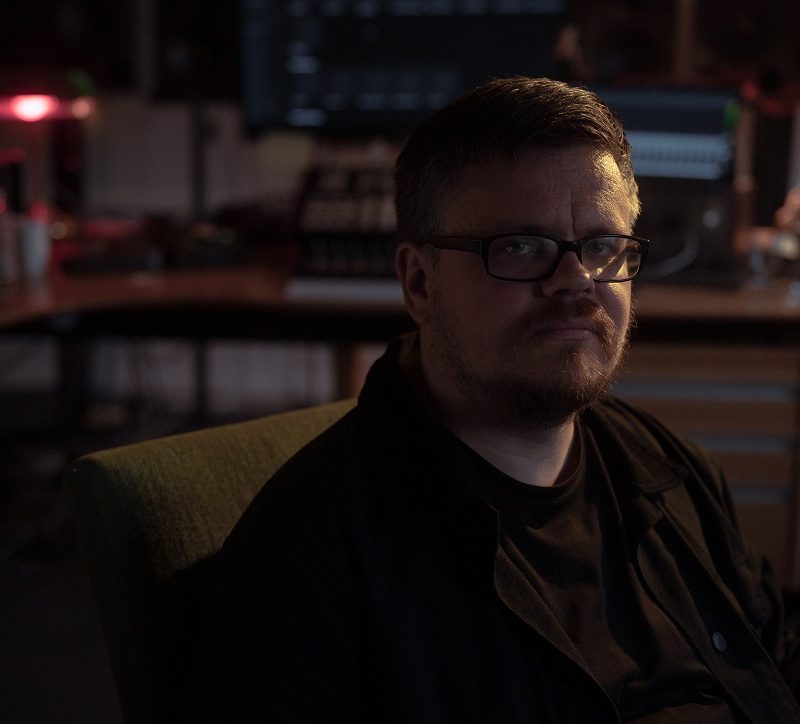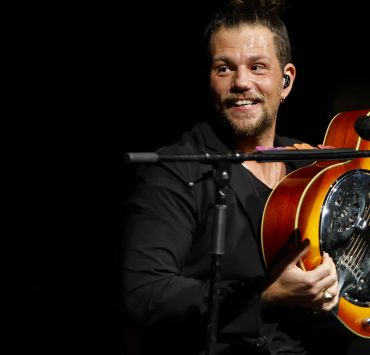KNÚT – Intervista al musicista e cantautore faroese

In occasione dell’uscita del nuovo album “Hjartasláttur” (Tutl Records), ho avuto il piacere di intervistare il musicista e cantautore faroese Knút.
Ciao e benvenuto su Tuttorock, parliamo subito di questo bellissimo nuovo album “Hjartasláttur”, che significa battito del cuore. Perchè hai scelto questo titolo?
Il titolo dell’album deriva dal titolo di una delle canzoni, “Hjartasláttur”. Come per molti altri brani dell’album, questo particolare brano è stato in lavorazione per molto tempo. Sono passati più di dieci anni da quando ho scritto la canzone ed essa ha subito alcune modifiche. Sono molto felice di come è venuto alla fine perché è un brano a me caro. Anche l’idea o il concetto del battito cardiaco è un’immagine adatta ai temi generali dell’album. Il battito del cuore è letteralmente ciò che ci fa correre come esseri umani, e può anche essere inteso in senso cosmico o oceanico come qualcosa di più metafisico o spirituale, come uno preferisce.
9 canzoni ispirate da cosa?
Da alcuni tra i grandi problemi e le domande. Amore, morte, vita, esistenza e tutto il resto. Musicalmente c’è una corrente di fondo riferita agli inni nelle nove canzoni dell’album. Ho un profondo amore per i salmi e gli inni e questo emerge regolarmente in primo piano in questo album. Gli inni parlano di resa, elevazione e lode. Penso che abbiamo bisogno di questo tipo di cose nel mondo in cui viviamo.
Adoro tutto l’album ma, se dovessi scegliere una canzone in particolare, direi “Tú ert”. Quando hai ascoltato per la prima volta l’intero album nella sua interezza, c’è stata una canzone che ti ha fatto dire: “wow, questa suona davvero bene”?
Buona scelta. La adoro anch’io. Nel complesso sono molto grato e soddisfatto di come sono venute le singole canzoni e del suono generale dell’album nel suo insieme. Se dovessi sceglierne una da cui ho avuto quella sensazione “wow, questa suona davvero bene”, ti direi “Villiniborg”. È stata l’ultima canzone completata per l’album e anche il primo singolo ad essere pubblicato. Ho finito questa canzone sapendo di aver bisogno di un singolo per iniziare il processo del nuovo album e con questa traccia ci siamo arrivati.
Parlami un po’ della foto di copertina.
La copertina è opera di mio cugino, Bruno Mikael Eysturstein, che è un artista visivo. Lavora con vari media, tra pittura, fotografia e manipolazione digitale. Sono rimasto colpito da questa immagine in particolare e sembrava adattarsi molto bene ai temi dell’album. Ci sono molti riferimenti oceanici nei testi e anche questa atmosfera eterea e spaziale sia nel suono dell’album che nei testi.
Grazie a Laura Marongiu di Motion Agency ho scoperto tanti bravi artisti delle Isole Faroe. Soprattutto trovo atmosfere fantastiche nella vostra musica. Pensi che sia dovuto al fatto di vivere in un paese dove la natura è ancora al primo posto?
Ad essere onesti, penso che molti artisti nelle Isole Faroe conducano stili di vita piuttosto urbani e tardo-moderni, ma allo stesso tempo le Isole Faroe si trovano nel mezzo dell’Oceano Atlantico settentrionale e siamo in totale circa 55.000 persone che vivono qui. Anche nella capitale Tórshavn, che conta circa 23.000 abitanti, siamo vicini alle montagne e all’oceano in un contesto di continuo cambiamento. Anche il tempo e il clima sono abbastanza mutevoli dato che siamo in mezzo all’oceano, quindi anche quei fattori incidono. L’autore e artista William Heinesen (1900-1990) aveva scritto una frase famosa che diceva “È ancora un altro di quei giorni oceanici” che descriveva l’esistenza nelle Isole Faroe. È verissimo. Abbiamo molti giorni in cui sembra che il cielo e la terra si fondano insieme. Sono arrivato ad apprezzare ciò profondamente. L’oceano ha in qualche modo un effetto radicante, fa bene all’anima.
Come vivete la musica nelle Isole Faroe, voglio dire, c’è collaborazione tra artisti?
Oh sì, c’è molta collaborazione. Le persone tendono a contribuire ai progetti degli altri, è una scena piccola, quindi in molti modi è facile realizzare cose del genere. Stanno accadendo molte cose interessanti anche sulla scena culturale, sia nella musica che in altre forme d’arte. Non c’è assolutamente alcun motivo di annoiarsi qui, a meno che tu non lo voglia!
Quando e come ti sei avvicinato alla musica?
La musica ha sempre fatto parte della mia vita fin da quando ho dei ricordi. I miei genitori e i miei nonni cantavano e suonavano molto, mio padre era un insegnante di musica nelle scuole elementari, e la musica e il canto sono sempre stati per me qualcosa di profondamente significativo e importante. C’è anche molta musica e canto sia formale che informale che viene suonato nelle Isole Faroe, quindi è un ottimo posto in cui crescere. Forse le cose si stanno muovendo in una direzione più professionale in questi giorni con una divisione più chiara tra i professionisti e non, ma spero che riusciremo a mantenere l’atteggiamento informale nei confronti della musica e del canto che abbiamo qui da molti decenni. Una cultura musicale fiorente ha bisogno sia dei professionisti che delle forme partecipative più informali di musica come la danza, il canto, ecc.
Hai già un tour in programma?
Non ancora, ma spero di ottenere qualcosa di più concreto e realizzabile in un futuro non troppo lontano.
Con quale formazione salirai sul palco?
Varierà a seconda del concerto e delle circostanze. Il nucleo della band sull’LP Hjartasláttur è di quattro elementi, ma nel mix troviamo anche adorabili coristi e un violinista. Per i concerti dal vivo può essere qualsiasi cosa, da solista, duo, trio, quartetto alla band al completo.
Grazie mille per il tuo tempo, vuoi aggiungere qualcosa per chiudere l’intervista?
Grazie a te per il tuo interesse per la mia musica. Sono semplicemente profondamente grato per il fatto che l’album sia fuori e che le persone lo ascoltino e mi diano dei riscontri!
MARCO PRITONI
** ENGLISH VERSION **
On the occasion of the release of the new album “Hjartasláttur” (Tutl Records), I had the pleasure of interviewing the Faroese musician and singer-songwriter Knút.
Hello and welcome to Tuttorock, let’s talk right away about this amazing new album “Hjartasláttur”, which means heartbeat. Why did you choose this title?
The album title comes from the title of one the songs, ‘Hjartasláttur’. As with many other tracks on the album, this particular track has been underway for a long time. More than ten years have passed since I wrote the song and it has undergone some changes. I am very happy with how this song turned out and it is dear to me. Also the idea or concept of the heartbeat is a fitting image for the overall themes of the album. The heartbeat is literally what keeps us running as humans, and it can also be understood in a cosmic or oceanic sense as something more metaphysical or spiritual, if you like.
9 Songs inspired by what?
Some of the big issues and questions. Love, death, life, existence and everything in between. Musically there is an underlying hymnal current in the nine songs on the album. I have a deep love of psalms and hymns and it comes to the forefront regularly on this album. Hymns are about surrender, uplift and praise. I think we need those kinds of the things in the world we live in.
I love the whole album but, if I had to choose one song in particular, I would say “Tú ert”. When you heard the whole album for the first time in its entirety, was there a song that made you say, “wow, this one sounded really good to me”?
Nice choice. I love it also. I am overall very thankful and pleased with how the individual songs turned out on this album as well as the overall sound of the album as a whole. If I had to pick one that I got that “wow, this one sounded really good to me” feeling from, it must be ‘Villiniborg’. It was the last song that was finished for the album and also the first single to be released. I finished this song knowing I needed a single to start of the new album process and we really got there with this track.
Please tell me about the cover photo.
The cover is an artwork by my cousin, Bruno Mikael Eysturstein, who is a visual artist. He works in various media, including painting, photography and digital manipulation. I was just struck by this particular image and it seemed to fit very well with the themes of the album. There are a lot of oceanic references in the lyrics and also this ethereal and spacey quality in both the sound of the album as well as the lyrics.
Thanks to Laura Marongiu of Motion Agency I discovered many good artists from the Faroe Islands. Above all, I find fantastic atmospheres in your music. Do you think it’s due to the fact that you live where nature still comes first?
To be honest, I think a lot of artists in the Faroes lead fairly urban and late-modern lifestyles, but at the same time the Faroes are in the middle of the North Atlantic ocean and we are around 55.000 people living on these islands. Even in the capital Tórshavn which has around 23.000 inhabitants we are still close to the mountains and the endlessly changing ocean. The weather and climate are also quite changeable as we are in the middle of the ocean, so there are a lot impressions from that. The author and artist William Heinesen (1900-1990) had a famous line that went “It is yet another one of those oceanic days” describing existence in the Faroe Islands. It’s very true. We have a lot days like where it seems like heaven and earth kind of blend together. I’ve come to appreciate this deeply. The ocean has a grounding effect somehow. It is good for the soul.
How do you experience music in the Faroe Islands, I mean, is there collaboration between artists?
Oh yes, there is plenty of collaboration. People tend to contribute to each other’s projects. It’s a small scene so in many ways it is easy to get things done like that. There is also a lot of interesting things happening on the cultural scene, both in music and in other art forms. There is absolutely no reason to be bored here, unless you want to!
When and how did you get into music?
Music has always been a part of my life as far back as I can remember. My parents and grandparents sang and played a lot, my father was a elementary school teacher in music, and music and singing has always come across as something deeply meaningful and important to me. There is also a lot of both formal and informal music and singing being done in the Faroes so it’s a great place to grow up in. Maybe things are moving in a more professional direction these days with a more clear divide between the professionals and those who “only” listen but I hope we can maintain the informal attitude to music and singing that we’ve had in the Faroes for many decades. A thriving music culture needs both the professionals and the more informal participatory forms of music like dancing, singing etc.
Do you already have a tour planned?
Not quite yet, but I hope to get something more concrete up and going in the not too distant future.
With which line-up will you appear on stage?
It varies on the gig and circumstances. The core of the band on the Hjartasláttur LP is a four-piece but then we have lovely backing vocalists and a violin player also in the mix. For live gigs it can be anything from solo, duo, trio, quartet to the full band.
Thank you very much for your time, do you want to add something to close the interview?
Thank you likewise for your interest in my music. I’m just deeply thankful for the fact that the album is out there and that people are listening and responding to it!
MARCO PRITONI
Sono nato ad Imola nel 1979, la musica ha iniziato a far parte della mia vita da subito, grazie ai miei genitori che ascoltavano veramente di tutto. Appassionato anche di sport (da spettatore, non da praticante), suono il piano, il basso e la chitarra, scrivo report e recensioni e faccio interviste ad artisti italiani ed internazionali per Tuttorock per cui ho iniziato a collaborare grazie ad un incontro fortuito con Maurizio Donini durante un concerto.













